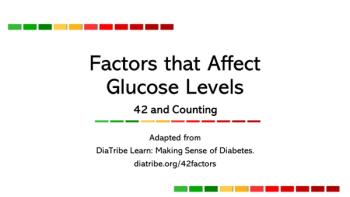
Dose-Dense Chemotherapy for Osteosarcoma Yields No Survival Benefit
LEEDS, England -- Increasing the intensity of chemotherapy for osteosarcoma of an extremity does not improve overall or progression-free survival despite improvements in histologic response, according to a large European trial.
LEEDS, England, Jan. 16 -- Increasing the intensity of chemotherapy for osteosarcoma of an extremity does not improve overall or progression-free survival despite improvements in histologic response, according to a large European trial.
The study was the latest in a series of three by the European Osteosarcoma Intergroup to show that three-drug, multi-drug, and dose-dense chemotherapy are no better than conventional chemotherapy for bone cancer, said Ian J. Lewis, M.D., of St. James University Hospital here, and colleagues in the Jan. 17 issue of the Journal of the National Cancer Institute.
In other studies, dose intensity has been linked to survival for breast cancer and Hodgkin's and non-Hodgkin's lymphoma. Dose-dense regimens are hypothesized to improve efficacy by minimizing regrowth of tumor cells between chemotherapy cycles.
The researchers compared "standard" chemotherapy--six three-week cycles of 100 mg/m2 Platinol (cisplatin) and Adriamycin (doxorubicin) at a dose of 25 mg/m2/day for three days--with an intensified regimen of the same doses. The latter were condensed into six two-week cycles plus 5 ?g/kg granulocyte colony stimulating factor (G-CSF) on days four to 13 of each cycle to increase white blood cell counts. Patients typically underwent surgery between cycles three and four.
The open-label study included 497 patients in 11 countries who were randomized to treatment over the nine-year period from 1993 to 2002, which makes it one of the largest clinical trials ever completed in osteosarcoma, the authors said.
Patients were age 40 or younger and had to have histologically confirmed high-grade osteosarcoma in an extremity long bone. Baseline tumor characteristics were well balanced between groups with regard to site and location within the bone.
Over the average five years of follow-up, there were 193 deaths (39% overall) and 272 relapses or recurrences (55% overall).
The two regimens did not differ significantly in the primary endpoint of overall survival (hazard ratio 0.94, 95% confidence interval 0.71 to 1.24, P=0.64) or the secondary endpoint of progression-free survival (HR 0.98, 95% CI 0.77 to 1.24, P=0.83).
Five-year overall survival rates were 55% (95% CI 48% to 62%) for the standard regimen and 58% (95% CI 51% to 65%) for the dose dense regimen. Five-year progression free survival rates did not significantly differ by treatment either (39% versus 41%).
While the results show that the dose-dense strategy does not work for bone cancer as it has for other cancers, they also "call into question the use of histologic response as a surrogate outcome measure in trials of this disease," the researchers wrote.
Good histologic response, defined as more than 90% tumor necrosis, was seen for 36% of the conventional group and 50% of the dose-intense group (RR 1.30, 95% CI 1.09 to 1.54, P=0.003).
Histologic response (HR 2.01, 95% CI 1.20 to 3.38) was more important to prognosis than the treatment arm was (HR 0.89, 95% CI 0.49 to 1.62), but there was no interaction between the two (P=0.92).
"Certainly, these results challenge the emphasis placed on histologic response as the key treatment-related prognostic factor and suggest that the predictive value of histologic response may be protocol specific," Dr. Lewis and colleagues wrote.
"Although inappropriate as a surrogate outcome measure, pathological response to preoperative chemotherapy is able to select for patients with good prognosis," they added.
This is not an uncommon occurrence for clinical trials, according to an accompanying editorial by Stephen L. George, Ph.D., of Duke University Medical Center, in Durham, N.C.
"Promising early results measured by response rates often do not translate into long-term benefits such as longer progression-free survival or overall survival," he wrote. "Part of the reason may be that fairly large increases in response rates are required to translate into detectable overall survival differences."
Notably, the trial was only powered to detect a relatively large 15% absolute difference between arms, which does not exclude a clinically relevant 10% difference in overall survival.
The authors also suggested that an association between histologic response and overall survival may have been obscured by worse than expected outcomes among the 11% of patients with unknown histologic response.
Other possibilities may be that histologic response is dependent on dose rather than dose intensity, they suggested, or that the technical assessment of histologic response changed over time so that more tumors were deemed to have responded.
Regression analyses indicated that received Platinol dose, Platinol dose intensity, Adriamycin dose, and preoperative or overall Adriamycin dose intensity did not impact overall survival. Overall Platinol dose may have been associated with improved survival, because each 10% increase in preoperative dose (HR 0.87, 95% CI 0.76 to 0.99) and in overall dose (HR 0.88, 95% CI 0.77 to 1.00) was linked to improved survival.
Only 10% of patients in each arm stopped chemotherapy prematurely due to excessive toxicity or patient choice. However, nearly all patients (97%) had severe, grade 3 to 4 toxicity.
Dose-dense chemotherapy reduced the risk of severe leukopenia (RR 0.85, 95% CI 0.77 to 0.95) and neutropenia (RR 0.83, 95% CI 0.76 to 0.89) compared with conventional chemotherapy but increased the risk of thrombocytopenia (RR 1.33, 95% CI 1.17 to 1.52) and mucositis (RR 1.30, 95% CI 0.99 to 1.70). There was no consistent evidence of increased early cardiotoxicity with the dose-dense regimen, the authors said.
Newsletter
Enhance your clinical practice with the Patient Care newsletter, offering the latest evidence-based guidelines, diagnostic insights, and treatment strategies for primary care physicians.

































































































































































































































































































